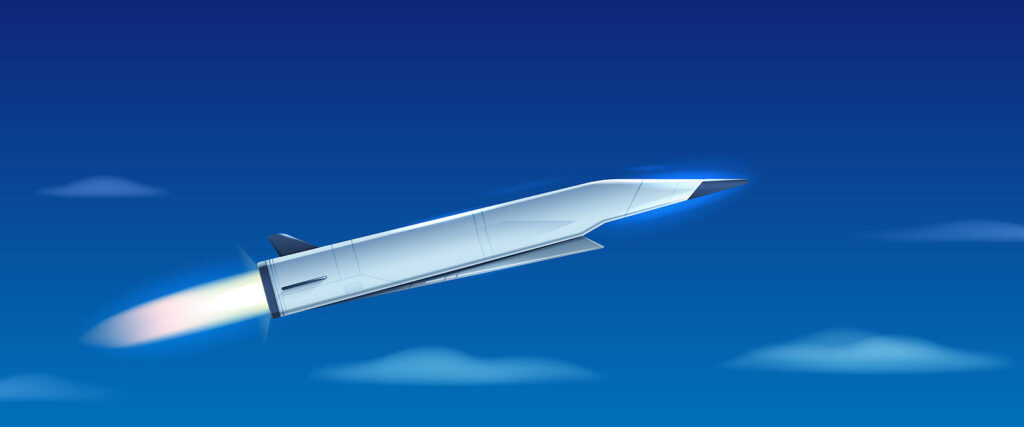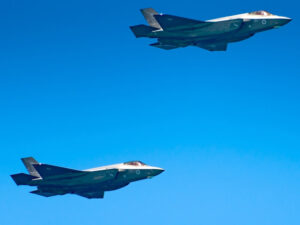The U.S. is in a hypersonic race against two of the world’s most advanced militaries, Russia and China.
In mid-March, Russia deployed and fired its Kinzhal hypersonic missiles against southern Ukraine – the first time a hypersonic missile has been used in combat – sending an unequivocal message to the world about its hypersonic capabilities.
China is also reminding the world that it is amping up its own hypersonic fleet with a program of aggressive missile tests. In fact, China deployed its first hypersonic weapon test, named the DF-17, in 2020 with another hypersonic missile test fire again in April of this year.
Hypersonic is defined as moving at a speed much faster than the speed of sound. To put it into perspective, using modern hypersonic technology that allows near Mach 10 speeds, a person could commute from New York to Los Angeles in about 20 minutes. Speed, agility and precision make hypersonic weapons not only highly effective but essential to the strategic mission of an effective military.
Unfortunately, the U.S. Department of Defense (DOD) is playing catch-up.
Sen. Angus King, I-Maine, chairman of the Senate Armed Services strategic forces subcommittee, emphasizes the growing chasm in capability. “We’re probably, I think, five years behind in terms of where the Chinese are,” he said.
“Technological developments often determine the outcome of conflict,” King said. “And hypersonics, to me, are the game-changing strategic difference in any future conflict that this country is engaged in. And we’re behind.”
To quickly decrease this technological gap, the Department of Defense needs to use every avenue. This means leaning on America’s strong industrial base as well as employing the most efficient contracting methods in the government’s toolbox.
Pentagon officials recognize the growing threat of these global power hypersonic capabilities and are prioritizing the pursuit and adoption of hypersonic innovation. But delays during the acquisition process are cause for concern.
Traditional contracting methods such as Federal Acquisition Regulations (FAR) can take between 12 to 24 months just from RFP notice to the awarding of the contract. The good news is that there is already a channel in place that can speed through these contracts. To quickly deploy hypersonic innovations, the Pentagon must leverage Other Transaction Authority (OTA) agreements — a non-traditional government contracting vehicle designed to fast-track research and prototype initiatives.
OTA’s are designed to jump-start the slow technology-buying process by slashing the Pentagon’s red tape allowing for a contract award in about 100 days after proposals are submitted.
Efficiency is gained by rigorously testing the technology before buying it. OTA projects provide greater flexibility than typical government procurement, and they are welcoming of companies that have no history of working with the Department of Defense. Congress understands the vital benefits of OTAs and through this year’s annual defense bill has encouraged their increased use.
OTAs are inherently flexible by design, speeding up the contracting process while making it easier for America’s industrial base to collaborate and submit on pressing initiatives. The agility of OTAs has proven to be successful in addressing pressing needs of the Pentagon, exemplified during the COVID-19 pandemic as OTAs were the chosen vehicle to quickly mobilize vaccine development efforts.
Leveraging OTAs during a time of crisis “allowed for that flexible and rapid contracting, or that avenue around the FAR at a time when things needed to happen quickly and the FAR was not the best way to do that,” said Maiya Clark, a senior defense researcher at The Heritage Foundation.
The organization I work for, the National Security Technology Accelerator, manages several OTAs for the government and is supporting the DoD mission of advancing the nation’s hypersonic capabilities. Through its Strategic & Spectrum Missions Advanced Resilient Trusted Systems (S²MARTS) OTA, NSTXL has awarded a Hypersonics Advanced Manufacturing Test Capability Test opportunity to Fiber Materials Inc., and Purdue Applied Research Institute. Upon completion, the project will greatly reduce time and cost in the development of essential hypersonic weapons and deliver enhanced advanced manufacturing capabilities to the DOD for future mission requirements. The S²MARTS OTA also successfully awarded a prototype supporting hypersonics advanced capabilities for weapon system improvements. These successful DoD opportunities showcase the ability OTAs have on progressing pivotal technology areas.
To maintain its status as a global superpower, the United States cannot afford to fall any further behind in our hypersonic military systems. Adopting OTAs as the military’s main acquisition process will allow the U.S. military to meet and surpass the technological advantage other nations currently have.







